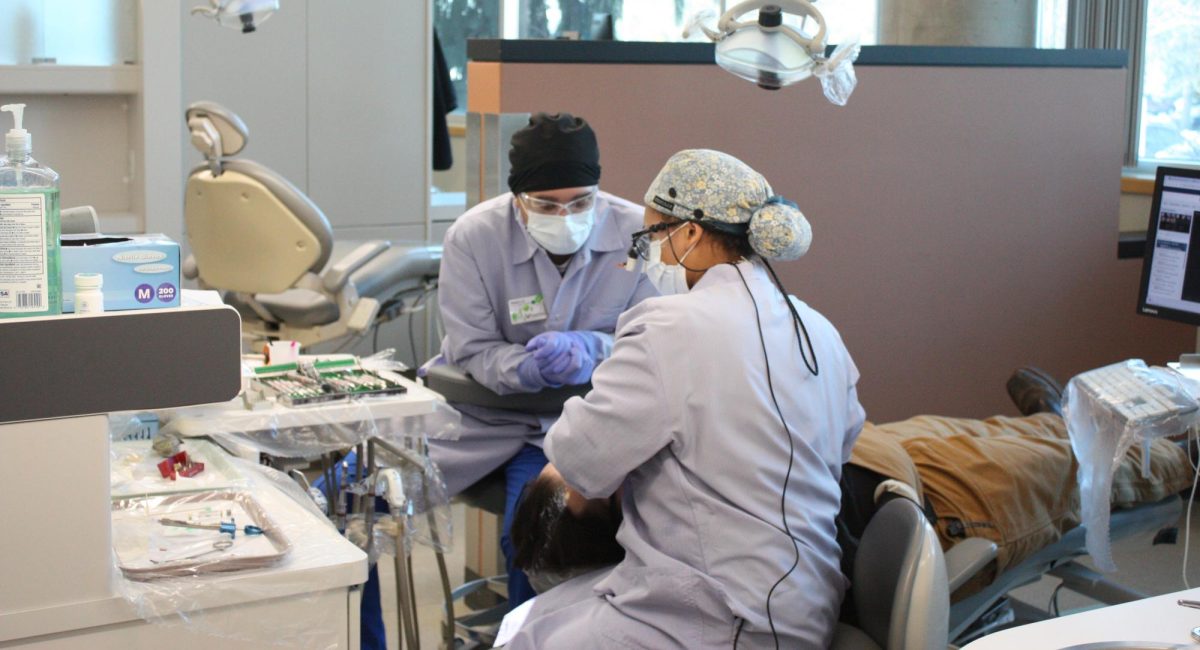Editorial: Ending the stigmas surrounding mental health
May 8, 2019
It permeates every aspect of our culture, yet we don’t talk about it. One in five Americans suffer from this, yet we don’t talk about it. It costs the U.S. approximately $193.2 billion in lost earnings per year, yet we don’t talk about it. What’s worse is that it takes the lives of over 44,000 Americans every year and is the second leading cause of death for 15-24 year olds, according to the Center for Disease Control and Prevention.
We’re talking about mental illness. Or rather, mental health and well-being.
If the number of people being affected by mental illness is so high and costs so much, why don’t we care? Why don’t we do more to raise awareness, educate the public about what mental health really looks like and how to offer help to those in need?
Brief history
The study of psychology dates back to ancient Greece but did not become a recognized science until the late 19th century.
Since then, there have been many myths, stereotypes and stigmas built around those who suffer from mental illness. Stigmas are a mark of disgrace associated with a particular circumstance, quality, or person and often leads to discrimination.
In order to educate the public, May is Mental Health Awareness Month, originally organized by the Mental Health America organization in 1949 (formerly known as the National Association for Mental Health).
Every year in May, organizations across the country fight stigma, provide support, educate the public and advocate for policies that support people with mental illness and their families.
It became officially recognized by President Barack Obama in 2013.
“As a Nation, it is up to all of us to know the signs of mental health issues and lend a hand to those who are struggling. Shame and stigma too often leave people feeling like there is no place to turn,” Obama said. “We need to make sure they know that asking for help is not a sign of weakness—it is a sign of strength.”
Many of the stigmas associated with mental health can be removed by changing the way we discuss the topic. For starters, the brain is an organ like any other in the human body and can become chemically unbalanced and inefficient, leading to what we consider mental illness.
So why don’t we treat it like any other illness? Why don’t we go to the doctors and seek help?
Sometimes all we need is to learn how to rewire our thought process, other times we actually need to take medication to better balance the chemicals responsible for stress, fear, anxiety and happiness.
Here are a few organizations and programs dedicated to educating the public, raising awareness, breaking stigmas and changing the conversation surrounding mental health.
Campaigns
The #WhyCare campaign, launched by the National Alliance on Mental Health Illness, emphasizes the power of caring. It is an opportunity to share the importance of mental health treatment, support and services.
It also serves as a challenge to address broken systems and attitudes that present barriers to treatment and recovery.
“NAMI believes that providing education and support—and advocating for better care and treatment—is critical to getting people on a path of recovery,” said Angela Kimball, acting CEO of NAMI. “This year, during Mental Health Month in May, we’re asking you to tell us why you care using the hashtags #WhyCare and #NAMICares to join the conversation with examples of what you are doing personally or in your community.”
According to NAMI’s website, care has the power to make a life-changing impact on those affected by mental health conditions. Through our own words and actions, we can shift the social and systemic barriers that prevent people from building better lives.
The #4Mind4Body campaign, which was created by the MHA last year, focuses on the relationship between your physical and mental health.
According to their website, this year they are expanding this theme to explore the topics of animal companionship, spirituality, humor, work-life balance, recreation and social connections as ways to boost mental health and general wellness.
Every day this month, MHA is challenging you to make small change—both physically and mentally—to create positive gains for your overall health and wellbeing. From #MindfulMonday to #SleepWellSunday, there is something for everyone, even those who do not suffer from a mental illness.
A list of the daily challenges can be found here.
Treatment
When seeking care it is important to remember that there is no “one size fits all” treatment for mental health. There are many different methods that can assist on the road to recovery including medication, counseling, social support and education.
According to NAMI’s website, when people are directly involved in designing their own treatment plan, including the creation of recovery and wellness goals, choosing services that support them and evaluating treatment decisions and progress, the experience of care and outcomes are improved.
With the help of a treatment team, you can develop a recovery plan that works for you.
Whether you know someone, or are struggling with your own mental well-being, The Easterner encourages you to take the month of May to be mindful of how you think and talk about mental illness. Together, we can #EndTheStigma surrounding mental health and create a new dialogue that allows people to seek help, offer support and find a path to recovery.
Did you know? (courtesy of NAMI)
- Suicide is the 10th leading cause of death in the U.S., and the second leading cause of death for people aged 10–34.
- Each day an estimated 18-22 veterans die by suicide.
- Approximately one in five adults in the U.S.—43.8 million, or 18.5%—experiences mental illness in a given year.
- Approximately one in five youth aged 13–18 (21.4%) experiences a severe mental disorder at some point during their life.
What is stigma? Why is it a problem? (courtesy of NAMI)
“Navigating life with a mental health condition can be tough, and the isolation, blame and secrecy that is often encouraged by stigma can create huge challenges to reaching out, getting needed support and living well. Learning how to avoid and address stigma are important for all of us, especially when you realize stigma’s effects.”
- People experiencing mental health conditions often face rejection, bullying and discrimination. This can make their journey to recovery longer and more difficult.
- Mental health conditions are the leading cause of disability across the United States.
- Even though most people can be successfully treated, less than half of the adults in the U.S. who need services and treatment get the help they need.
- The average delay between the onset of symptoms and intervention is 8-10 years.








